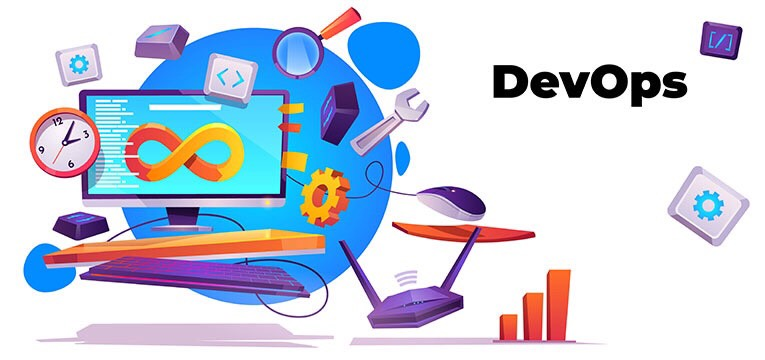When DevOps first came about, nobody had any idea of its meaning. Books define it in an entirely different way.
Furthermore, speakers during conferences sent out conflicting messages on absolute tools to do ‘true’ DevOps or not to do. However, DevOps in software app development is not the same as Agile.
It is a set of tools and methods, which help programmers deliver software in a quicker way. It’s actually a part of a programmer’s daily life and not something one does. DevOps takes Agile a step further through bringing release and deployment closer to development and testing.
On its own, it means that the Agile team has the responsibility of developing, testing, and releasing the software they built.

Teaching developers how to Test
Anyone could test software. And, software developers could learn testing via DevOps. DevOps testing traverses the whole process in software development, as well as the delivery lifecycle. No longer are testers simply focusing on feature verification and functional testing.
Testers must be involved in doing testing, basic security testing, operations testing, analyzing and monitoring logs, and production data. No software is an island. Even tiny programs such as games, which run on a phone or tablet must play well with their environment, as well as other software that runs there.
Imagine all developers in a software development company are also testers. As they perceive that code quality now is their responsibility, the production of bugs slows to a crawl.
Automated testing tools start to spread through the development team. Furthermore, these tools allow a developer to begin thinking like a tester; while writing tests in executable and committable code.
Continuous Testing and Test Automation in DevOps
In the DevOps model, the choice of technologies and tools becomes very important. The choice of tools enables the ability of an organization to deliver high-velocity services and apps.
Moreover, in the DevOps model, there’s a bigger emphasis on automated testing since we want to build a culture in which we could push down code to the systems with confidence and faster.
Aside from automated functional tests, there should also be a set of performance tests and resilience/security tests in the delivery pipeline.
Before any of the automated tests above could be implemented, the first thing is making an automated build and a delivery pipeline using a continuous integration tool. Continuous Integration gets every new code line into a build and checked versus unit tests.
Testing in Production
Production testing does not all the time mean the execution of functional/performance testing scripts against a live system wherein users utilize an application.
You could begin by analyzing A/B trends or multi-variant tests. Also, you could keep track of servers for any unusual activity, like high usage of CPU, memory leaks, and so on.
Continuous Delivery
Continuous integration is about developers smoothly checking code into the main branch, continuous delivery on the other hand is about release process automation so the app could be deployed automatically, anytime.
When code passes continuous integration testing in DevOps, it should be deployed automatically to a test environment, separate from a development environment.
The test environment must imitate the production environment, and thus be refreshed before every deployment to ensure a clean target. Refreshing the test environment should be automated as well.
Once a build passes QA, it’s deployed to a staging environment ideally, which is the same as the production environment.
Reinventing Tester Roles in Automation
There is, in reality still a lot of room for testing pros in the era of DevOps. They only have to adapt to a rewritten organizational hierarchy and an entirely different mindset on testing objectives.
A lot of organizations, when implementing development and operations are leveraging new automation and practices to boost quality and speed.
The secret ingredients of DevOps for most organizations are development approach that’s test-driven and continuous testing. Even when organizations don’t start DevOps with a focus on improved testing automation, they learn quickly via QA and bottlenecks, to achieve continuous code delivery. Developers, in most instances, are more responsible for caring and feeding tests.
Developers, from the very start, are writing their own tests, and don’t pass Go until the function is error-free. This in itself covers a ton of testing mechanism already, which is done historically by QA.
DevOps has the tendency to treat the test as an activity to be entirely automated. For testers, the push toward DevOps could be frightening.
It isn’t difficult to imagine the tools and methods in the wrong hands could crush the special role of developers out of development groups.
The best way to remain relevant is through understanding one’s unique contribution, explaining it, as well as excelling at it. The model is all about getting rid of siloes.
Separate QA and test teams in general are an anti-pattern. Nevertheless, it’s still required that people have specific skills in testing, embedded experience, and knowledge in cross-functional teams, along with creating a quality culture of the DevOps model. Members of the development team with specialized abilities support the capability of the team in crafting testable code.
Across the team, they transfer testing skills, ask good questions, contribute to the continuous quality enhancement of the team, and make risks visible.
The DevOps process promotes the team’s responsibility for a product, not only during development time but after the release as well. The testing and quality scope is growing to include tooling and infrastructure to learn all about the applications’ production usage.
A lot of QA testers and pros continue evolving, to handle the role of being test consultants on all the different aspects of testing, and inspire a test-first approach as well on the code’s infrastructure.
The Impact of DevOps on Testing
These days, testers are expected to at least have the following skills and knowledge to carry out testing activities in an effective manner.
- Basic Unix/Shell scripting, like for instance Python
- Basic knowledge about networking
- Performance testing tools like Gatling or JMeter
- Continuous integration and delivery
- Knowledge of containers like Kubernetes, or Docker
- Ready for resilience and operations testing
- Cloud services, such as Azure, and AWS among others
- Querying monitoring tools, like Splunk
Conclusion
The DevOps model represents a major revolution in software delivery. It provides faster delivery of a product and improved customer experience.
Moreover, it minimizes the risk of deficient software deployment, making everybody happy, from software development, senior management, operations, marketing and sales, and most important of all, the customer.
You May Like To Read:
- How to Build a Small Business Website on a Tight Budget
- Understanding the Role of UI and UX Design in Corporate Websites
- Discover 7 Must-Know Facts About Building a WordPress Website
Author Bio: Kristan B is an analyst in a Software app development company Tatvasoft Australia. She is working with the production and sales team for project creation. She is a risk-taker and likes to discover further possibilities while working.














